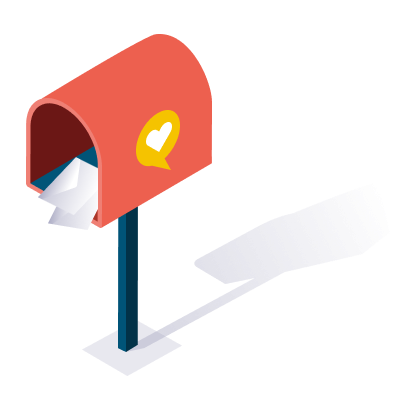TNS Experts
This post was submitted by a TNS experts. Check out our Contributor page for details about how you can share your ideas on digital marketing, SEO, social media, growth hacking and content marketing with our audience.
Do you know what it takes to handle an eCommerce business? If not, here's a blog that enumerates three principles of eCommerce management that can prevent the roadblocks from halting your company's progress.
Having an online store can be a very lucrative venture for any entrepreneur, provided they understand and adhere to the guidelines and rule sets of Ecommerce management. There are many roadblocks your online business will come across every day, and in order to prevent these roadblocks from halting your company’s progress, you need to understand and master the three principles of Ecommerce management.
You want all transactions to be transparent and straightforward, and a standard form of terms and conditions should cover all your transactions. You will get paid for the sale upfront, in return for delivery of a product within the timeframe specified by the terms and conditions.
Buyers should have a clear understanding that they are entering a contract with your company when they purchase goods from your website and in order to protect your company from fraudulent claims, directly outline the shipping methods and time-frame, terms of delivery, how you handle refunds and payments along with exclusions of liability and terms of use for your website.
You will want to specify the law of jurisdiction based on your location. In the case of a legal dispute, the case will be shifted to your legal system, which will prove to be very important if you don’t want to find yourself negotiating foreign laws you don’t understand.
While you can expect the majority of transactions to go without a hinge, you can also be certain that you will have to deal with fraudulent activity across the website. As your business grows, the threat of customer fraud will grow exponentially, and it will usually be in the form of identity theft.
In order to protect yourself from frauds and win legal disputes quickly, get professional litigation support services to handle claims and disputes and provide reports and valuable legal records for your case. Frauds can come in many forms, and you won’t be able to recognize or fight them on your own.
On a final legal note, always remember that different laws and conditions apply in different countries, and you will have to abide by some foreign laws in order to successfully deliver the product to the customer. For instance, some customs offices will allow you to ship medication into their country, and some won’t. So make sure to provide all relevant information to the recipient based on their location.
Make sure the shipping and delivery policies are clearly defined on your website and product pages so that the buyer can have a concrete time frame in mind when expecting a product along with knowledge of the delivery method and shipping costs. It will be up to you to specify these parameters and determine if the buyer will be paying for shipping or if you will be handling shipping costs through promotions and special deals.
If you want to increase conversion rate and the average spend, you will want to provide free shipping whenever possible. This way, you can allow the customer to buy an extra product, and by providing them with clear and detailed shipping and delivery information, you will be well within your rights to handle any dispute with ease.
Be sure to maximize your storage space and optimize it according to customer preferences – every store has its top selling products and you can organize your storage area so that these products are always available and at hand, ready for fast shipping. Have your storage and printing areas in close proximity for efficiency and, if you can, have your office near the post office.
Define your carrier methods. You will probably have different carriers for domestic and international transactions, and you can acquire discounts with most carrier companies, so be sure to invite a representative to negotiate. Start with your local carriers as they will have fast delivery times and better customer service, but don’t “marry” yourself to any company, because your will be transitioning to bigger carrier companies as you start shipping nationally and worldwide.
Calculating your rates can be tricky as carrier websites require you to manually enter plenty of information, which is time consuming. Take an easier route and use shipping software, like rate calculators instead. A calculator will show you carriers, rates, services and form destination information.
There are a number of ways you can define your shipping costs, but there are only three you should stick to: free shipping, flat rate and charging what you pay. Customers love free shipping and it can actually prove to be more lucrative for your business if you do it right. Find the lowest shipping costs and cover them for light-weight items, that will enable customers to buy more products and keep coming back to the website.
If you can’t afford free shipping, charge a flat rate per order based on size, weight and other factors. You will have to research the average costs of shipping at certain weights to be able to provide a rate.
Finally, there are plugins that can show the customer live carrier rates at checkout, which will allow you to charge the same amount you would pay for shipping. This could be a viable solution for local or domestic customers, but not necessarily for those unwilling to pay high rates just because you are situated thousands of miles away.
Lastly, clearly define your return and refund policy and display it prominently on your website. Buyers should know exactly if they are eligible to cancel the order, return the product if it’s not delivered in the specified condition, or if any other unforeseen circumstances arise. Try to be as liberal as possible with the return and refund policy and allow the customer to return their funds within the “cooling off period” of 14 days. Ask the customer if they can pay the cost of return and specify that the goods need to be returned in merchantable condition.

First of all, you will have to define the product range you are going to sell and promote. You can use online databases and statistics to determine the most profitable niches with highest conversion rates and start there. But be careful, as demand industries have poor profit margins and high competition, so there is little chance you’ll be able to set yourself apart and grab your piece of the market cake.
Therefore, it would be best to find products that belong to a niche demographic, like baby wear, or cycling equipment. If you only go for technology and gadgets, you will be competing with the entire world, but this way, you will serve a specific demographic with less competition.
You will need to obtain your product for sampling and eventually, storage so that you have it at hand, ready for shipping. You can either be a wholesaler, which means storing products from manufacturers at your facility, or you can be a drop shipper, which means that the manufacturer ships the product based on the order you forward from your website.
Wholesaling requires medium to large initial investments but you get to control the packaging and shipment, while drop shipping requires no investment but you have less control and not all manufacturers allow drop shipping.
Secondly, research your competition and write your business plan. When you’ve researched the niche, found the suppliers and evaluated market potential, it’s time to research the competition and apply the skyscraper method – learn from the best and improve their model.
Your business plan will be a road-map for your company’s growth through the years. Define your short-term, mid-term and long-term goals, your policies, values, mission and vision. Along with that, define your brand voice, create stories and messages, and always portray a certain personality behind the company. People buy based on emotion, and they get emotionally attached to a person, not a machine.
Make sure you’ve registered your business if you have the resources, to create a more trustworthy brand but also to enjoy benefits like reduced taxes and personal asset protection, among other.
Name your business, set up a store and create your visual identity, preferably something unique to set you apart. Make the name relevant to the industry and catchy for easy remembering, and devote your time to building up your SEO ratings.
You can do this with quality content and smart keyword implementation. Search engine optimization can be tricky and requires a lot of skill, so try outsourcing the task to a freelancer or a digital marketing agency. Ranking your store on Google means the difference between success and failure, quite literally.
Ecommerce can be very rewarding. With the rise of digital technology, everyone in the world has turned to the internet for knowledge, business, shopping and social interaction. This global trend has created enormous market opportunities for almost any industry and has enabled entrepreneurs to venture into the lucrative businesses of online selling of goods and services. Make sure to follow these guidelines and you will be one of the few who have built a successful online company that only keeps on growing.
Make sure to follow these guidelines as well as to learn more about the legal side with Business Law at SCU and you will be one of the few who have built a successful online company that only keeps on growing

You’ll also receive some of our best posts today

This post was submitted by a TNS experts. Check out our Contributor page for details about how you can share your ideas on digital marketing, SEO, social media, growth hacking and content marketing with our audience.

Mobile devices have become an integral part of our lives in this digital...
Don’t miss the new articles!